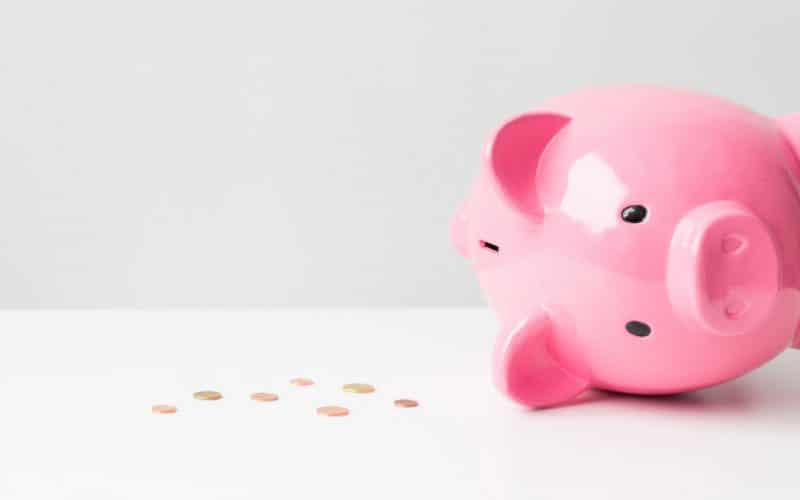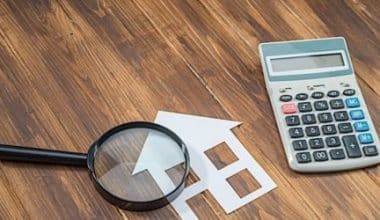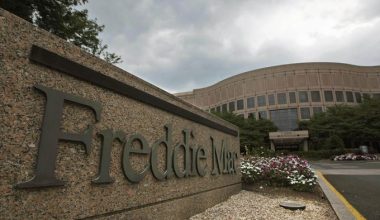Saving for a down payment is frequently the most difficult obstacle for first-time home purchasers. The good news is that you don’t have to put down 20% to buy a home.
In reality, if you served in the military, are a rural home buyer, are a member of a credit union, or qualify for 100 percent financing through certain mortgage lenders, you may be able to buy a house with no money down. Down payment assistance programs can also allow you to buy a home with very little money out of your own pocket.
Learn more about a no-money-down payment mortgage and loan and whether they’re good for you.
What Is a No Down Payment Mortgage?
A no-down-payment mortgage is a house loan that does not require a down payment. Saving for a down payment can take years, so no-payment-down mortgages make it easier for borrowers to buy a home.
Mortgages with no down payment are only possible on government-backed loans. Private lenders make these loans, which are insured by the federal government. It’s less risky for the lender because the government picks up the tab if you stop paying mortgage payments.
How to Get a Mortgage with No Down Money
Becoming a homeowner does not always necessitate a significant down payment; there are methods to assist you in getting the keys without depleting all of your funds. Here are three major paths that may be appropriate for you:
#1. Check to see if you are eligible for a government-sponsored program
USDA and VA loans make it possible to obtain a mortgage with no down payment. To qualify, you must meet certain criteria linked to the location of the property, your money, and whether you or a spouse has served in the military.
#2. Look into down payment help programs.
Cities, governments, and non-profit groups are all working to make homeownership more accessible, especially for first-time purchasers and other low- to moderate-income borrowers. Examine the website of your state housing authority to see whether your situation qualifies you for a program that offers a forgiving down payment loan or other sorts of assistance.
#3. Request assistance from relatives or friends.
Many lenders may accept a gift from a family member — and in some situations, a close friend, labor union, or employer — as a down payment. You must produce a letter from the originator of the gift stating that you are not required to repay the money.
Mortgage Options with No Down Payment
A government-backed loan is the most common option to obtain a mortgage with no down payment. The federal government insures these loans, which means the lender does not have to bear the entire risk of a default that leads to foreclosure. This motivates the lender to extend you better loan conditions. There are four main government-backed options for a mortgage with no down payment.
#1. Veterans Administration (VA) Loans
Private lenders such as banks, credit unions, and mortgage financing businesses make VA loans, which the Department of Veterans Affairs partially guarantees.
VA loans typically offer no or low down payment requirements and lower interest rates than standard mortgage and loan products. These loans are also more flexible, allowing for a greater debt-to-income (DTI) ratio and poorer credit scores, and they do not necessitate private mortgage insurance (PMI).
VA loans do not require down payments as long as the sales price is equal to or less than the appraised worth of the home. The “VA home loan guaranty” is an arrangement in which the VA agrees to reimburse a lender in the event of a loss due to foreclosure—this serves as your down payment.
Eligibility for a VA Loan
To be eligible for a VA loan, you must meet the following requirements:
- Be a veteran, active-duty service member, National Guard or reserve member, or the surviving spouse of a veteran.
- Have a VA Certificate of Eligibility (COE).
Other qualifications differ depending on whether you are on active duty or a veteran if you served or are serving in the National Guard or Reserve, and when you served. See the complete list of VA loan eligibility conditions.
#2. USDA Loans
The United States Department of Agriculture (USDA) offers low- and moderate-income Americans the opportunity to become homeowners through a variety of loan, grant, and loan guarantee programs.
USDA Rural Development provides these low-interest, fixed-rate USDA loans directly. For suitable customers, financing is also available in the form of a loan from a lender that is guaranteed by USDA Rural Development.
- Section 502 Direct Loan Program:
This program helps persons with low and very low incomes reside in suitable rural areas by providing payment assistance to improve their capacity to repay the mortgage—critical metric lenders consider when deciding whether to grant a loan. Your income determines the amount of payment assistance you receive.
- Section 502 Guaranteed Loan Program:
This program works with licensed lenders to provide mortgages to low- and moderate-income households in appropriate rural areas. The program provides licensed lenders with a 90% guarantee to decrease the risk of making 100% loans to eligible rural homebuyers.
There is no down payment required for any of these home loan programs, but you must live or plan to live in an approved rural location to qualify.
Eligibility for USDA Loans
In addition to purchasing in an eligible area, USDA loan conditions include:
- The property you are purchasing must be your principal residence.
- You must demonstrate your ability to manage debt.
- Your DTI ratio must be at least 41%.
USDA loan income restrictions vary by program and location. Your income cannot exceed 115 percent of the area’s median income for guaranteed loans. Direct-issue loan income limitations are substantially lower—as low as 50% of the median income in some places.
#3. Zero-Down Mortgages from Private Lenders
You don’t have to rely solely on government-backed programs to obtain a mortgage loan with no down payment. Some financial organizations also provide no-money-down mortgages, albeit they are not as common as they were prior to the 2008 financial crisis.
Lender Eligibility with No Down Payment
North American Savings Bank and Navy Federal Credit Union are two lenders that provide loans with no down payment. Navy Federal does not require a PMI, but you must be a member to be eligible. This mortgage is only available to customers with a credit score of 700 or above.
If you’re considering this option, be sure you contact the lender directly to learn more about their products and services before applying.
Read Also: No Closing Cost Mortgage: How It Works
Mortgages With Low Down Payments
If you do not qualify for one of the no-payment-down house loans, you may be able to buy a home with the next best thing: a low-down-payment mortgage. Here are some of the possibilities:
#1. FHA mortgages
An FHA loan, backed by the Federal Housing Administration (FHA), requires only 3.5 percent down and a credit score as low as 580. (If your credit score is between 500 and 579, you may be able to qualify for a 10% down payment.) It’s a popular choice for first-time homebuyers with less-than-perfect credit. FHA loans, like other government-insured programs, are issued by private mortgage lenders, so you may need to meet a lender’s criteria in order to qualify. You must also pay FHA mortgage insurance, which increases your monthly payment and the loan’s cost.
#2. HomeReady mortgage
Fannie Mae, a government-sponsored corporation, backs the HomeReady mortgage, which is available through numerous mortgage providers (GSE). A HomeReady loan requires a 3% down payment, and the loan itself has flexible underwriting. While you will have to pay mortgage insurance to compensate for the low down payment, it is frequently less expensive than a conventional loan.
#3. Possible home mortgage
Home Possible, backed by Freddie Mac, is a similar mortgage program to HomeReady, with a 3% down payment required. Borrowers must pay for mortgage insurance, which may be at a reduced rate, but they also have the same credit options.
#4. Conventional 97 mortgage
Another GSE-backed product available from Fannie Mae and Freddie Mac that just requires a 3% down payment is the Conventional 97 mortgage. It’s worth noting that traditional mortgages have a higher minimum credit score requirement of 620. You must be financially prepared to pay for mortgage insurance each month, as with other low-down-payment schemes.
#5. Good Neighbor Next Door (GNND)
The Good Neighbor Next Door (GNND) program is for borrowers who work in specific public service occupations — teachers, firemen, law enforcement, and emergency medical technicians — and want to purchase a house in a qualifying region. The program, sponsored by the United States Department of Housing and Urban Development (HUD), offers a discount of up to 50% on a home with a $100 down payment. The borrower must qualify for a first mortgage through the program, and the discounted portion of the home is paid for with another loan. The second mortgage will not have to be repaid as long as the borrower continues to meet program standards.
Benefits and Drawbacks of a No-payment-down Mortgage
The potential to purchase a home with no or little money down can be enticing, but there are some risks.
Pros
- You can purchase a home faster: When you don’t have to come up with a large down payment, buying a home sooner is easier, especially if you live in a hot market. Alternatively, if you want to take advantage of a fantastic price or a market slump, you can act quickly without having to save for a down payment.
- You can have more money on hand: Even if you have enough money to make a substantial down payment, you may want to retain some cash on hand for renovation or other purposes. That extra income is still accessible to you with a zero-or low-down-payment mortgage.
Cons
- You will have no or very little equity: You won’t have much or any equity in your home when you start with a no-down-payment home loan because you’ll owe nearly 100 percent of the home’s worth. That means you won’t be able to access your equity in an emergency, and if the market falls, you may find yourself owing more on your property than it’s worth, making it impossible to sell and move if required.
- It’s possible that your interest rate will be greater: In some situations, a no-down-payment loan may require you to pay a higher mortgage rate. Because you have less money invested in the home, a mortgage lender may consider you a better risk. Naturally, the higher the interest rate, the more you’ll pay in total.
- You’ll need a larger mortgage, which means more costs: The less you put down, the more you’ll have to borrow, which means you’ll pay more in interest throughout the loan’s life.
- Your house offer may not appear as compelling: In most parts of the country, the housing market is competitive. If someone else makes an offer on a house with a substantial down payment, that buyer may appear to the seller to be a better bet for a smooth transaction.
- You may be charged additional fees: Some no-down-payment home loans have additional fees that increase the loan’s cost.
Saving for a Down Payment
Whether you intend to make a lower down payment or a larger check, it is critical to create a savings plan. To begin saving money, follow these guidelines:
- Make a budget for yourself: When you apply for a mortgage, lenders will look over your finances to see how much house you can reasonably afford. Once you’ve determined your monthly budget, you may do the arithmetic to determine your target down payment amount.
- Reduce costs wherever possible: Saving money is more than just earning more; it is also about spending less. As you begin to save for a down payment, examine your monthly spending and consider ways to cut back. Can you give up buying coffee every morning? How much money can you save if you stop dining out and make everything at home? Even if you have a limited budget, you may find methods to save.
- Consider short-term adjustments to your other financial goals: If you’re 25 and want to buy a house, consider lowering or pausing your retirement contributions to direct those funds toward your objective. Just keep in mind that once you’ve settled down, you’ll want to prioritize catching up on your retirement funds as quickly as possible.
- Look for savings matching schemes: Saving for a down payment does not have to be entirely on you. Some mortgage lenders, like Lower, will match your funds up to a specific sum. There are also some dollar-for-dollar matching schemes offered by state housing financing agencies.
- Make certain that your funds are also making money: While a lucrative interest rate on a no-risk savings account is unlikely, there are banks and credit unions that provide an above-average yield on deposits. Every dollar matters when saving for a down payment on a home.
Can You Get FHA with No Money Down?
No-money-down FHA Single-Family Home Loans are not available. FHA and VA mortgage loans are often confused. VA loans are only available to qualify veterans, active military, and surviving military spouses.
Should You Buy a Property Without a Down Payment?
Since only the lender has money at risk, lenders will consider you a bigger risk. Thus, you may receive a loan with a higher interest rate than if you had made a significant down payment.
What Prevents FHA Loans?
A high debt-to-income ratio, bad credit, or insufficient finances for the down payment, monthly mortgage payments, or closing costs can disqualify you from an FHA loan.
Can You Buy a Property with No Down Payment?
Most mortgage lenders require a deposit between 5% and 10% of the property value, while others offer 100% mortgages on shared ownership properties, allowing you to get a mortgage with no deposit.
Why Is a Down Payment Required for Mortgages?
Why mortgage lenders need down payments. Zero-down mortgages are rare. A home down payment minimizes the lender’s risk in numerous ways: Owned homes are less likely to default on mortgages.
Conclusion
The down payment is one of the most significant hurdles to homeownership for many borrowers. Most people can take years to save up thousands of dollars for a down payment. Fortunately, there are options for purchasing a home with little to no down payment.
If you’re just getting started, learn more about the home-buying process. You’ll be able to make the best decision for your family if you understand your options.
No Down Payment Mortgage FAQs
What credit score do you need for no down payment?
The lowest credit score required for no-down-payment lenders is typically 620.
Can you borrow money for a down payment?
Yes, a loan for a down payment is possible. Borrow Against the Equity in Another Property is one financing option you can use to cover a down payment. Borrow from family and friends.
Can you use a credit card for house downpayment?
A credit card cannot be used to make a down payment on a house. Credit card payments are not accepted directly by home sellers or lenders.
- Secondary Mortgage Market: Step By Step Guide On How It Works
- How To Buy A House With Bad Credit: Detailed Guide In 2022
- SECOND MORTGAGE: Definition, Rates, and Requirements
- BUSINESS LOANS FOR VETERANS: Best Easy 2022 Guide and; US Practices
- Mortgage: Simple 2022 Guide for Beginners and all you need Updated!!!






